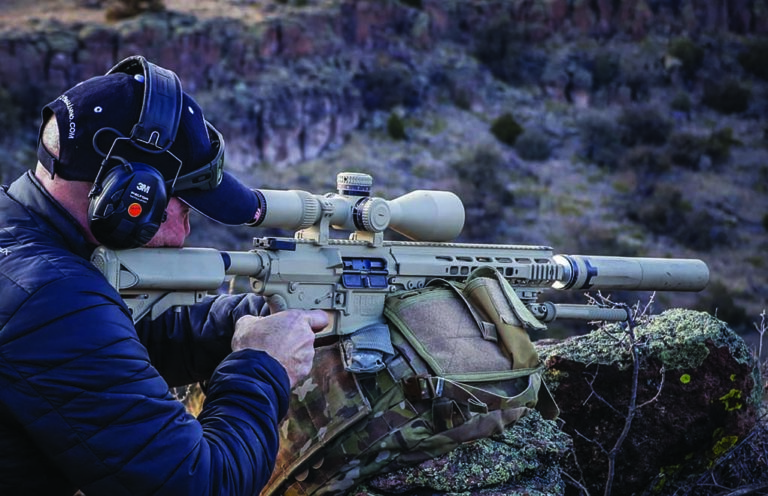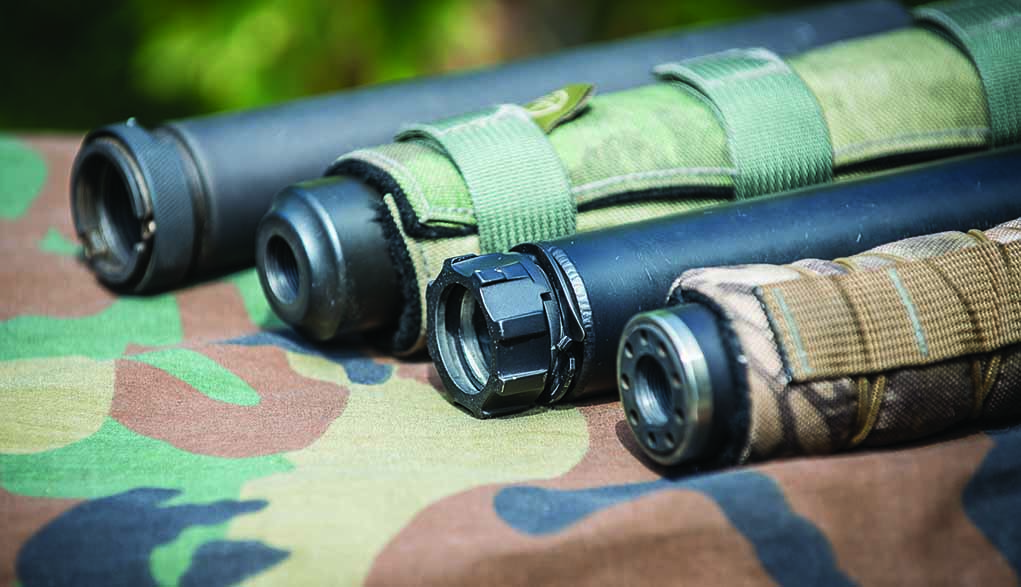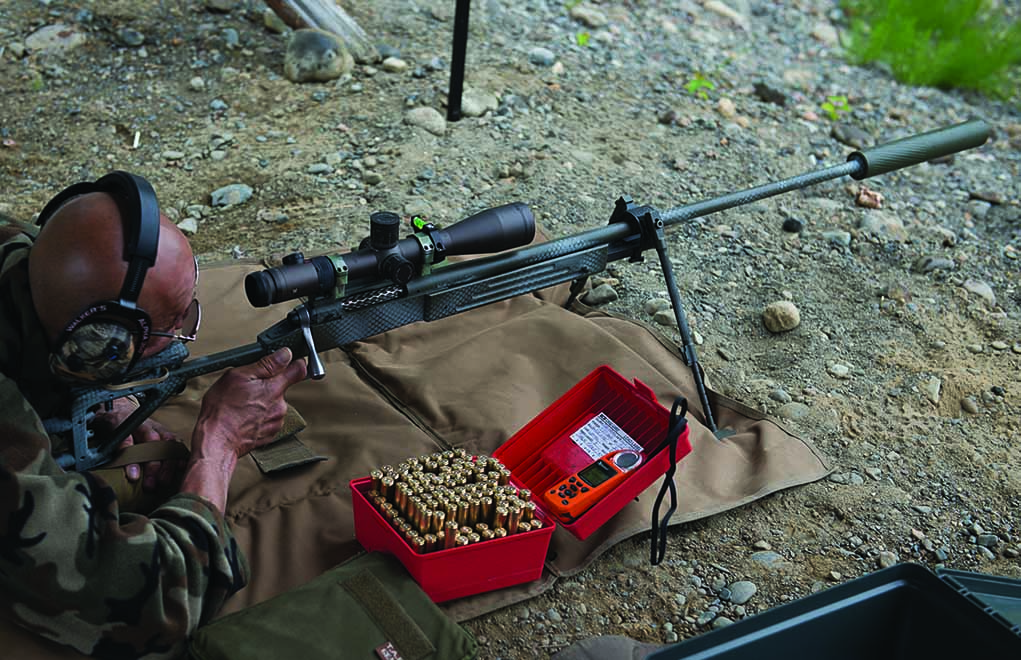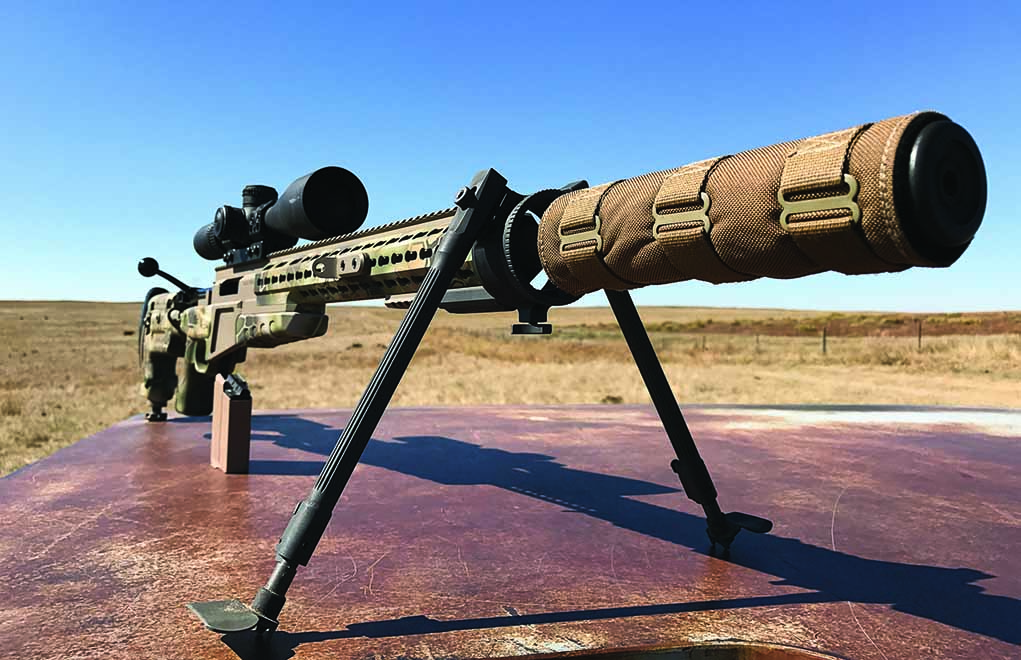
If you're looking for greater accuracy, on of top noise suppression, then the answer is an emphatic “yes.” A suppressor will pay you back tenfold in results.
What Are The Benefits Of A Suppressor:
- Noise reduction, particularly for indoor operations.
- Most can be swapped between calibers.
- A high-quality suppressor can increase the accuracy of your rifle.
- Most modern suppressors are simple to maintain.
- Properly built, a suppressor will last you two lifetimes.
I’m a huge proponent of suppressors. I’ve been collecting them since 2001, and needless to say, I have amassed quite a collection. Suppressors are one of the best muzzle brakes you can get for your rifle.

Suppressors are a tool, and like any tool, they should be used in the proper context. They’re broken down into niche applications, from precision rifles models to those meant for sub-guns with high rates of fire used in close quarters. In other words, you don’t want to mix applications. That doesn’t mean you cannot crossover a suppressor from one system to another: The results may vary, and the basic principle of sound suppression — not as much.
Coming from a precision rifle background, I covet accuracy and precision. Because of this focus in my shooting discipline, I’m a bit more discerning in my choices. Not all suppressors are created equal in this application, and the goal is understanding and recognizing what’s essential to the application and to the end user.
Get More Suppressor Info:
- The Suppressor: How Is It Made, It Works And How To Buy One
- Best AR-15 Suppressor Options For A Quiet Advantage
- Best .22 Suppressor Choices To Mute Your Plinker
- Handgun Gear: Best 9mm Suppressor Choices
- Choosing A Flash Suppressor, Muzzle Brake And Compensator
The most prominent example I can give is in regard to straight-up sound suppression. The effectiveness of a suppressor’s sound suppression is based on the volume of air created by the superheated gasses. How the can captures the gases helps to mitigate the gunshot. In other words, all things being equal, a bigger can will sound quieter than a smaller one.
But with a precision rifle, sound is a secondary consideration.
Suppressors For Precision
With a precision rifle, we’re shooting supersonic projectiles, so the suppressor only goes so far in the sound department. Most suppressors of equal size meter within a few decibels of each other. I have been to several suppressor tests, and the average spread is only about 3dB. It’s true that 3 decibels can be noticeable, but really what the human brain responds to is tone — a low tone versus a higher tone. These differences tend to follow the design more so than straight dB readings. And this is the subjective part of a suppressor’s effectiveness.

If I’m shooting a sub-gun inside a building, I want to focus on sound suppression as well as durability with the high rate of fire. Superheated gasses get super-hot, super-fast. It doesn’t take much to heat them over 300 degrees — the point at which they’ll melt just about anything they touch, including you and your gear.
Likewise, a precision rifle suppressor can get very hot, but you want to meter out the build-up of heat to prevent problems. For example, we use a suppressor cover to block the mirage. The heat coming off a suppressor is only a few inches in front of the high-power optic, and that mirage causes a lot of problems with accuracy. Using a cover is a must to block the mirage, thus giving the shooter a clear view the target.
Also, we all know that heat is not a friend of the precision rifle shooter. Adding a layer like a suppressor introduces both temperature and a channeling factor. We’re moving the gasses, which in turn moves the bullet. A poorly designed or assembled suppressor will cause fliers in your groups — if not worse — and by worse I mean a bullet strike somewhere inside the suppressor. It could be a baffle strike or an endcap strike, and both have adverse effects on accuracy.
So, with all that said, only accurate cans are interesting to me.
Suppressed Accuracy
Given these variations we might be subject to, how do we decide what precision rifle suppressor to buy?
If you want to know the gold standard for a precision rifle suppressor, look to ThunderBeast Arms (TBAC) out of Cheyenne, Wyoming. That crew has created the best precision rifle suppressor on the market. Sure, they have many competitors that come incredibly close, but I consider them the gold standard. The team at TBAC consists of shooters, and their development of suppressors are based on actual shooting — not just sound tests, but actual accuracy testing. I compare most suppressors to the TBAC brand and move forward from there.

Also note that switching a suppressor rated for one caliber and stepping it down to a different caliber is very common. You will not lose much in the way of sound suppression; in fact, it may increase when shifting to a smaller caliber. You can shoot a .308 suppressor on a 6.5 caliber rifle. You can also shoot it on a 5.56 rifle. This is one of the benefits of a quick-detach mount — the ability to move the can from rifle to rifle with ease.
We can get very deep into the weeds with suppressors. From baffle design to welds, it’s all important. By choosing a high-quality product from a reputable company, you reduce the concerns. And most importantly, don’t always focus on the sound numbers — but the accuracy. If your rifle shoots ½-MOA groups and your suppressor opens that up to ¾-MOA groups, you’re not doing yourself any favors. A high-quality suppressor should reduce the group’s size, not increase it.
Don’t wait for the rules to change. I highly doubt we will see a change in the laws anytime soon. It’s best to get started today on your path to civilization.
Lastly, a suppressor should last you two lifetimes, and maintenance on a centerfire suppressor is very easy. When you first get it, weigh it. Monitor the weight, and as carbon builds up, you can clean it out. You can find a host of cleaning solution recipes on the internet, but brake cleaner works very well. Spray it inside, cut the carbon out and then rinse. I have several cans with more than 15,000 rounds through them. They look dirty, but they shoot the same as the first day out.
Editor's Note: This article originally appeared in the 2018 Long-Range Shooting issue of Gun Digest the Magazine.

Next Step: Get your FREE Printable Target Pack
Enhance your shooting precision with our 62 MOA Targets, perfect for rifles and handguns. Crafted in collaboration with Storm Tactical for accuracy and versatility.
Subscribe to the Gun Digest email newsletter and get your downloadable target pack sent straight to your inbox. Stay updated with the latest firearms info in the industry.

![Best Concealed Carry Guns In 2025 [Field Tested] Wilson Combat EDC X9S 1](https://gundigest.com/wp-content/uploads/Wilson-Combat-EDC-X9S-1-324x160.jpg)


![Best 9mm Carbine: Affordable PCCs [Tested] Ruger Carbine Shooting](https://gundigest.com/wp-content/uploads/Ruger-Carbine-Shooting-100x70.jpg)
![Best AR-15: Top Options Available Today [Field Tested] Harrington and Richardson PSA XM177E2 feature](https://gundigest.com/wp-content/uploads/Harrington-and-Richardson-PSA-XM177E2-feature-100x70.jpg)

It made sense to me when you said that adding a layer like a suppressor could introduce both temperature and a channeling factor. As you said, heat is not a friend of the precision rifle shooter. This is what I will consider although what I have are pistols and other concealed carry guns. I want to ensure that I could explore all the things that I could do with the guns that I have, especially when I purchase silencers for them. https://libertycans.net/mystic-x/